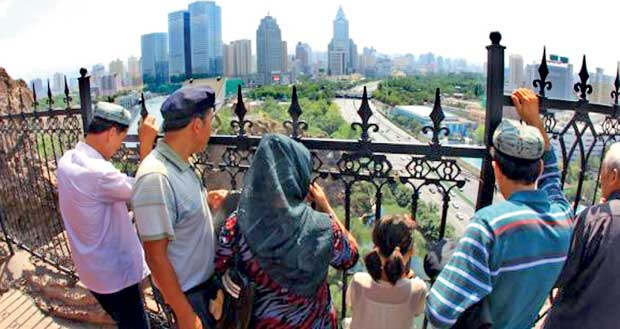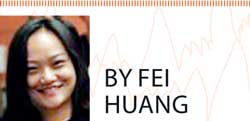Reply To:
Name - Reply Comment

 The World Bank estimates that 54.3 percent of global population now lives in cities and this proportion will continue to rise.
The World Bank estimates that 54.3 percent of global population now lives in cities and this proportion will continue to rise.
The process of urbanization, along with the springing up of skyscrapers, booming tertiary industries and floods of migrant workers, brings both opportunities and challenges. For instance, social exclusion manifests as gender stereotyping in labour markets, racial discrimination in school enrolment and slums where the poor live without access to basic services.
Sustainable urban development cannot be realized if certain segments of the society are prevented from fully participating in economic, social and cultural life, as well as from enjoying an acceptable level of personal wellbeing.
To go beyond infrastructure, we must empower people. Here are five approaches to make a city more inclusive.
1. Focus on the poor, vulnerable.
First, we need to accurately identify the vulnerable groups in urban areas. Vulnerable people are not resilient against natural or economic risks. They are often the unemployed, children, elderly, women and persons with disabilities.
Many Asian cities have a significant proportion of slum dwellers, due to the rapid expansion of both urban areas and their population, combined with outdated housing policies. In some countries, they represent about half of the entire population (45.5 percent in Pakistan in 2015).
Civil works to improve living conditions and water distribution networks need be prioritized in vulnerable slum areas. Infrastructure upgrades should target providing basic shelter for the vulnerable.
2. Innovate.
We need to integrate international best practices and project innovations into traditional measures of urban development. A good example is an Asian Development Bank (ADB)-supported urban investment improvement project in Pakistan that introduces prepaid water metering for effective commercial user-fee collection. It also incorporates green city development—which combines climate change resilience and disaster risk management—to create public green spaces and flood management features for riverbanks.
Innovative practices can help make infrastructure construction more effective and strike a balance between economic achievement, equitable development and environmental protection.
3. Gender inclusiveness.
Where women are exposed to gender inequality, have less employment opportunities and are even victims of sexual harassment, social interventions should be undertaken immediately.
With ADB’s help, the Pakistani city of Sialkot is exploring a new Uber-like taxi and van service project for women. A female-only transit option may reduce the chance that a woman will be molested while travelling. Moreover, the pilot will likely create jobs for women, boost their interest in driving themselves and empower women to develop their potential in other ways. With mobility, women will have better access to opportunities such as starting a business or getting an education.
Such efforts won’t succeed without innovative contributions from the private sector as well as visionary government regulation.
4. Smart infrastructure.
Smart, innovative ideas are essential for urban infrastructure and planning to be effective. Restructuring public urban spaces can save energy and help build communities, especially when citizens participate in the process.
Another good idea is recycling “reverse vending machines” that reward recyclers by paying cash for bottles, cans and other reusable materials. Cities should have enough vendor spaces so that people can have more opportunities to do business.
Sanitation workers in Ankara, Turkey, have obtained municipal support to create a library with a collection of books destined for landfills. The workers themselves have joined other citizens in using the library.
5. Experimentalist governance, policy reform.
Experimentalist governance involves members of society at different levels participating in policy design and implementation to enhance social inclusion. It should be bundled with national development and governance tools, such as five-year planning in Bangladesh, the People’s Republic of China and India or Pakistan’s Medium-Term Development Framework.
To further enhance urban social inclusion, multilateral development banks should be linked to local development planning, as well as to national development plans to help their member countries meet the Sustainable Development Goals. A vibrant, inclusive city is one where poor people’s voices are heard and public opinion is reflected in the political reform agenda.
An interesting innovation on resettlement of poor communities is the Land Assembly Districts (LADs) scheme developed by Harvard researchers, which allows property owners to unite before approving the sale of their land. The institutional analogies of LADs—such as land adjustments, residential community associations and community development corporations—which have been successfully tested in Japan and the Republic of Korea, enable neighbours to collectively decide how to deal with their land and people have a share in benefits as well as veto rights.
Inclusive urban development needs both qualitative and quantitative progress. A city should have a heart and a soul, in addition to the steel and stones that form its bones and muscles.
A city is healthy only when people living in it enjoy a sense of participation and fulfilment. Good governance, policy innovations, well-functioning civil society and strong communities are all key to achieve this goal.
(Fei Huang is an Intern, Central and West Asia Regional Department, the Asian Development Bank)